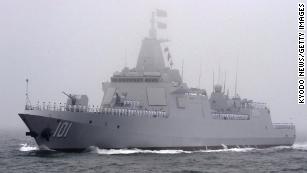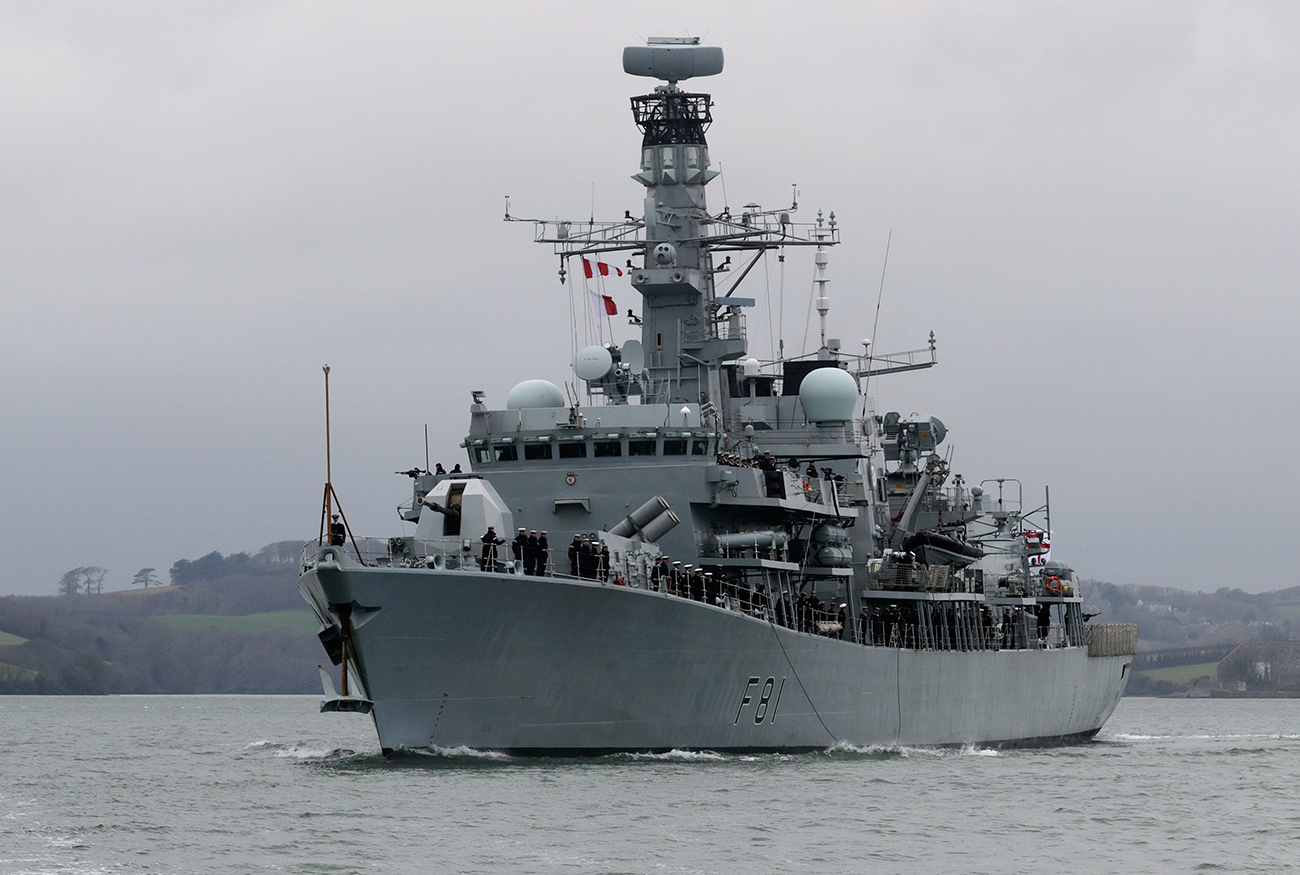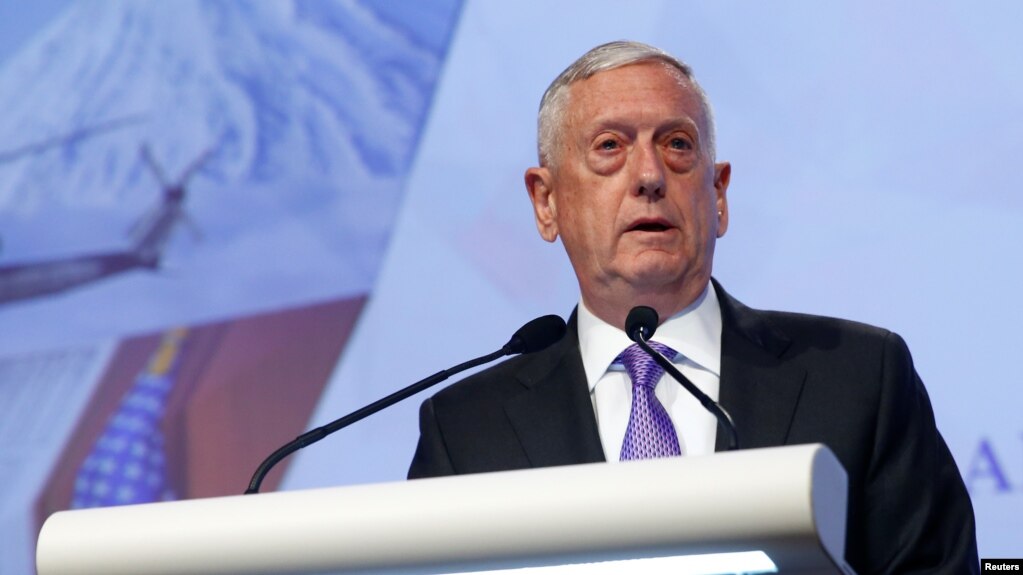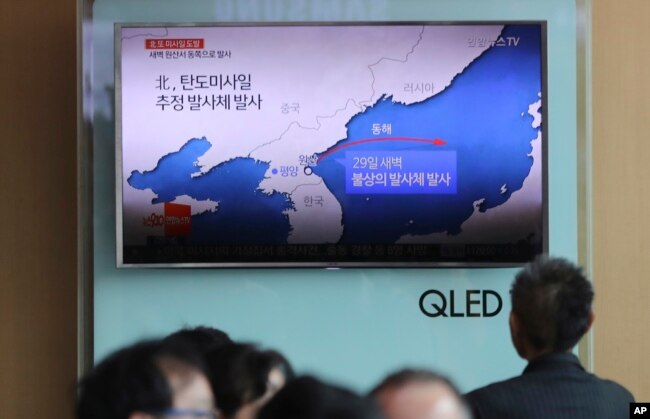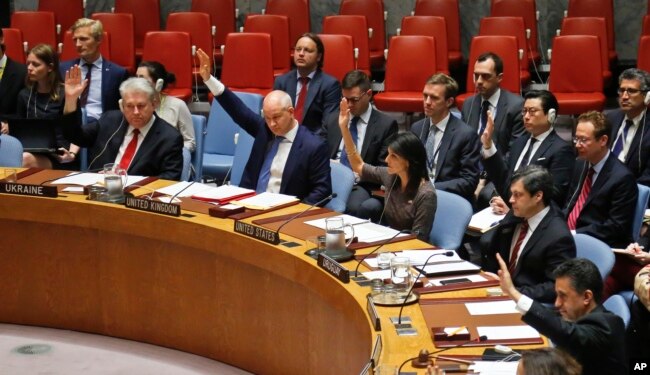Hong Kong -- With China-US relations already strained amid an escalating trade war, attention is about to turn to a familiar arena -- the South China Sea.
After years of stand-offs and brinkmanship in the hotly contested region, acting US Defense Secretary Patrick Shanahan is expected to unveil the Pentagon's new Indo-Pacific strategy at the Shangri-La Dialogue in Singapore on Saturday.
Intriguingly, just one day later Chinese Defense Minister Gen. Wei Fenghe is scheduled to speak about Beijing's role in the Indo-Pacific -- the highest-ranking Chinese official to appear at Asia's premier defense conference in eight years.
Their presence is significant.
Beijing claims almost the entire 1.3 million square mile South China Sea as its sovereign territory and aggressively asserts its stake, with Xi Jinping saying it will never give up "any inch of territory."
US military officials, meanwhile, have vowed to continue enforcing a free and open Indo-Pacific.

The Chinese Type 52D guided missile destroyer Guiyang participates in a naval parade on April 23, 2019.
William Choong, senior fellow at the Shangri-La Dialogue, said in a tweet Tuesday that the presence of both Wei and Shanahan would set up "a clash of two visions — the US/Japan-led 'free and open' Indo-Pacific and China's 'Asia for Asians.'"
Analyst Carl Schuster, a former director of operations at the US Pacific Command's Joint Intelligence Center, told CNN: "Chinese leaders now recognize the value of multilateral defense venues and want to deny the US a monopoly of great power influence."
US intentions for the region have already been telegraphed strongly.
The Pentagon has stepped up freedom-of-navigation operations to as often as weekly.
Of course, it's not just the US that's active around the region.
On May 12, it launched two Type-52D destroyers in a single day — the 19th and 20th of what are expected to be 30 ships in that class.
A US Defense Department report released in early May said China had Asia's largest navy, with more than 300 ships and submarines.
Military analyst Euan Graham, who was aboard an Australian warship during a recent South China Sea operation, said it and other Australian and US ships operating in the region were all closely monitored by the Chinese navy.
"The ubiquity of PLAN (PLA Navy) vessels shadowing other warships in the (South China Sea) suggests that China's surface force has grown big enough to be able to 'close-mark' at will," Graham wrote on The Strategist blog.
Meanwhile, the PLA Navy has held training exercises with Russia off China's east coast and with Thailand to the south.
To the north, Chinese air force jets in April conducted what Taiwan said was their most "provocative" mission in years in the Taiwan Strait, crossing the median line between the island and the mainland.
"It was an intentional, reckless and provocative action. We've informed regional partners and condemn China for such behavior," Taiwan's Ministry of Foreign Affairs said in a statement.
But it's clear Taiwan can't expect much quarter from China.
A May report on the PLA's English-language website touted a new amphibious assault vehicle as "the world's most advanced."
US military officials, meanwhile, have vowed to continue enforcing a free and open Indo-Pacific.

The Chinese Type 52D guided missile destroyer Guiyang participates in a naval parade on April 23, 2019.
William Choong, senior fellow at the Shangri-La Dialogue, said in a tweet Tuesday that the presence of both Wei and Shanahan would set up "a clash of two visions — the US/Japan-led 'free and open' Indo-Pacific and China's 'Asia for Asians.'"
Analyst Carl Schuster, a former director of operations at the US Pacific Command's Joint Intelligence Center, told CNN: "Chinese leaders now recognize the value of multilateral defense venues and want to deny the US a monopoly of great power influence."
US intentions for the region have already been telegraphed strongly.
The Pentagon has stepped up freedom-of-navigation operations to as often as weekly.
And the commander of the US Pacific Air Forces said this month that Air Force jets were flying in and around the South China Sea almost daily.
Washington has also sent warships through the Taiwan Strait separating China from what it calls its renegade province several times this year.
One of Washington's Taiwan Strait operations included a US Coast Guard cutter, which later sailed into the South China Sea — sending the fifth arm of its military and its main maritime law enforcement agency into the Pacific fray.
More robust US armament packages also seem to be part of the plan.
Washington has also sent warships through the Taiwan Strait separating China from what it calls its renegade province several times this year.
One of Washington's Taiwan Strait operations included a US Coast Guard cutter, which later sailed into the South China Sea — sending the fifth arm of its military and its main maritime law enforcement agency into the Pacific fray.
More robust US armament packages also seem to be part of the plan.
For bilateral exercises with the Philippines in April, the US loaded the amphibious assault ship USS Wasp with 10 F-35B stealth fighters — four more than it normally carries — and sailed it into the South China Sea.
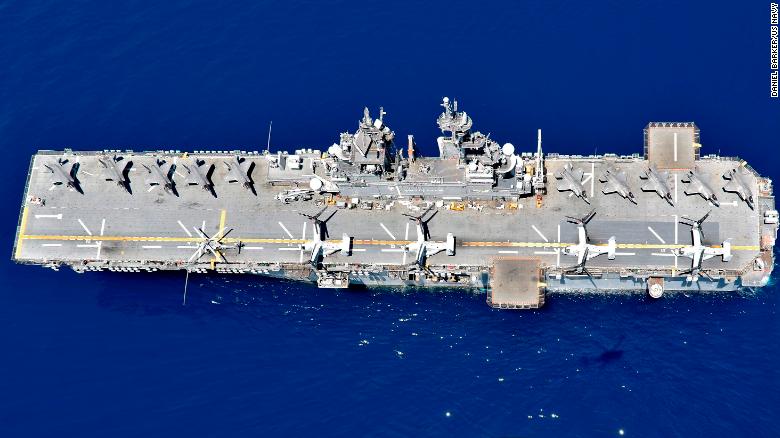
The amphibious assault ship USS Wasp transits the waters of the South China Sea with a large load of F-35 fighters.

The amphibious assault ship USS Wasp transits the waters of the South China Sea with a large load of F-35 fighters.
Of course, it's not just the US that's active around the region.
Its allies and partners are also involved.
France sent a ship through the Taiwan Strait this year, and is showing off its Charles de Gaulle aircraft carrier on the sidelines of the conference.
France sent a ship through the Taiwan Strait this year, and is showing off its Charles de Gaulle aircraft carrier on the sidelines of the conference.
In May alone, Japanese, Indian, Philippine and US ships took part in a multilateral South China Sea exercise — while conference host Singapore held live-fire drills with India.
A four-ship Australian naval force also visited countries around the region in a three-month trip that ended this week.
Meanwhile, US officials have bigger plans for the coming year.
In a conference call with reporters this month, US chief of naval operations Adm. John Richardson reiterated plans for the forward deployment of two littoral combat ships — fast, maneuverable warships designed for shallow-water operations — to Singapore this year.
Meanwhile, US officials have bigger plans for the coming year.
In a conference call with reporters this month, US chief of naval operations Adm. John Richardson reiterated plans for the forward deployment of two littoral combat ships — fast, maneuverable warships designed for shallow-water operations — to Singapore this year.
The ships would be the US Navy assets stationed closest to the South China Sea.
And in March, the commander of US Army forces in the Pacific, Gen. Robert Brown, announced plans to train 10,000 US troops for combat in "a South China Sea scenario."
And in March, the commander of US Army forces in the Pacific, Gen. Robert Brown, announced plans to train 10,000 US troops for combat in "a South China Sea scenario."
The Philippines and Thailand were mentioned as possible destinations for the troops.
The US pressure on Beijing extends back to Washington, where a bipartisan group of senators last week introduced legislation that would impose sanctions on Chinese companies and individuals who help the PLA's South China Sea build-up.
"China has been bully in both the South and East China Seas, encroaching on and intimidating its neighbors. Such aggressive behavior cannot go on unchecked," Sen. Ben Cardin, a Maryland Democrat, said in a statement.
For its part, China hasn't backed down at all: launching new warships, touting new weapons, keeping its forces active in the South China Sea — around Taiwan and beyond — and blasting Washington.
Beijing says it is the US that endangers peace in the region.
The US pressure on Beijing extends back to Washington, where a bipartisan group of senators last week introduced legislation that would impose sanctions on Chinese companies and individuals who help the PLA's South China Sea build-up.
"China has been bully in both the South and East China Seas, encroaching on and intimidating its neighbors. Such aggressive behavior cannot go on unchecked," Sen. Ben Cardin, a Maryland Democrat, said in a statement.
For its part, China hasn't backed down at all: launching new warships, touting new weapons, keeping its forces active in the South China Sea — around Taiwan and beyond — and blasting Washington.
Beijing says it is the US that endangers peace in the region.
On May 12, it launched two Type-52D destroyers in a single day — the 19th and 20th of what are expected to be 30 ships in that class.
A US Defense Department report released in early May said China had Asia's largest navy, with more than 300 ships and submarines.
Military analyst Euan Graham, who was aboard an Australian warship during a recent South China Sea operation, said it and other Australian and US ships operating in the region were all closely monitored by the Chinese navy.
"The ubiquity of PLAN (PLA Navy) vessels shadowing other warships in the (South China Sea) suggests that China's surface force has grown big enough to be able to 'close-mark' at will," Graham wrote on The Strategist blog.
Meanwhile, the PLA Navy has held training exercises with Russia off China's east coast and with Thailand to the south.
To the north, Chinese air force jets in April conducted what Taiwan said was their most "provocative" mission in years in the Taiwan Strait, crossing the median line between the island and the mainland.
"It was an intentional, reckless and provocative action. We've informed regional partners and condemn China for such behavior," Taiwan's Ministry of Foreign Affairs said in a statement.
But it's clear Taiwan can't expect much quarter from China.
A May report on the PLA's English-language website touted a new amphibious assault vehicle as "the world's most advanced."
With its help, combined with other weapons in China's arsenal, "the People's Liberation Army is well positioned to deal with Taiwan secessionists and potential island disputes."
The Shangri-La Dialogue touts itself as a venue "where ministers debate the region's most pressing security challenges, engage in important bilateral talks and come up with fresh solutions together."
But against that backdrop of bluster and build-up, it's hard to expect any compromises to emerge from what Wei and Shanahan have to say.
The Shangri-La Dialogue touts itself as a venue "where ministers debate the region's most pressing security challenges, engage in important bilateral talks and come up with fresh solutions together."
But against that backdrop of bluster and build-up, it's hard to expect any compromises to emerge from what Wei and Shanahan have to say.
